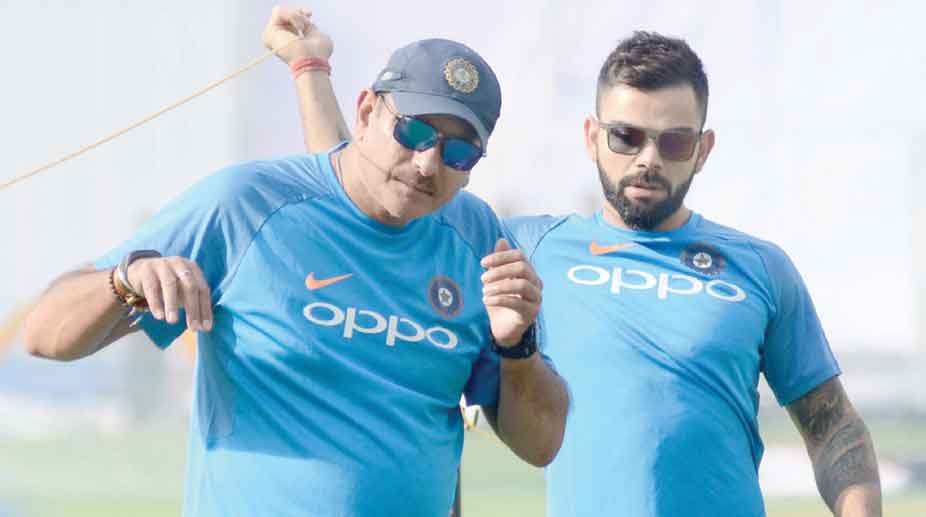The Indian men’s cricket team achieved many highs in 2017 — winning 37 out of their 53 matches across all formats — even as the women hogged the limelight by finishing runners-up at the ICC women’s World Cup in London. But off-field controversies refused to take a backseat.
The men’s team experienced an array of transformations with skipper Virat Kohli taking over the mantle of all the three formats in company of head coach Ravi Shastri, who replaced Anil Kumble after an avoidable battle.
Advertisement
With the change in leadership, the playing style also underwent a change. While win-at-all-costs became the mantra for the new-look Indian team, passing a new “yo-yo” fitness test was made mandatory to get into the national squad.
If statistics are to be taken into consideration, the Kohli-led side missed the 2003 world record set by the invincible Australians by just a single win.
Of the 37 victories, 21 came in One-day Internationals (ODIs) even as India regained their No.1 spot in the longest format, having won seven out of 11 Tests before South Africa pipped them towards the end of the year.
The only heartbreak came during the final of the ICC Champions Trophy when the Men-in-Blue lost to an unpredictable Pakistan.
But one loss at the 50-overs global tournament did not deter the team, which by now had learned to take losses on the chin.
Fresh from the 4-0 drubbing of England in the Test series in December last year, India continued their victory juggernaut by crushing the Englishmen in ODIs and Twenty20 Internationals (T20Is) by identical 2-1 margins.
India then continued their dominanation, defeating Bangladesh in a one-off Test before Kohli’s boys came from behind to beat Australia 2-1.
The cash-rich domestic T20 league (Indian Premier League) then took off and saw Rohit Sharma-led Mumbai Indians lift the silverware for the third time.
Within a week, India regrouped to take part in the Champions Trophy where they thrashed arch-rivals Pakistan in the opener before getting past South Africa and Bangladesh to reach the final which they eventually lost to Pakistan.
But more than the loss to Pakistan, it was the unceremonious exit of Kumble after 12 months of an otherwise harmonious tenure that grabbed the headlines.
The episode could have been handled better, but it was less hurtful and did not derail the team with Kohli’s favourite, Shastri, returning to succeed Kumble as the head coach.
The Champions Trophy followed a brief, victorious limited overs tour to the West Indies. The Indians then toured Sri Lanka for a full series under the new coach, where they whitewashed the Islanders 9-0 across all formats.
Coming back, India’s dominance continued across formats, starting with a 4-1 demolition of the Kangaroos in the ODIs before sharing the T20I series 1-1.
Kohli’s men then made light work of the New Zealanders, beating them 2-1 in both the ODIs and T20Is before ending the year with another humiliation of the hapless Sri Lankans in a hurriedly-organised home series.
This came in for sharp criticism from none other than Kohli, who complained of the cramped scheduling hurting preparedness for the challenging tour of South Africa.
The debate over the issue linked to the BCCI-planned Future Tour Programme (FTP), with reports emerging of disagreements between the Committee of Administrators (CoA) and the board officials.
The CoA tightened the noose around the BCCI and backed Kohli’s demand for a pay-hike in relation to a multi-crore deal between the board and a broadcaster.
The deliberations and arguments over issues like conflict of interest, professionalising the cricket administration and bringing the fans closer to the game continued throughout the year.
A major decision taken at the controversially delayed Special General Body Meeting (SGM), was the BCCI’s continued refusal to come under the National Anti-Doping Agency (NADA).
One of the major changes in world cricket took place when the ICC announced Test and ODI Leagues, aimed at making the bilateral rubbers purposeful.
While the men’s team basked in the glory of an emphatic home season, the women’s team under Mithali Raj — the leading run-scorer in women’s ODIs — doubled the joy by finishing runners-up in the ICC Women’s World Cup.
Their dream of winning the World Cup might have been shattered, but they were successful in winning a billion hearts, making July 23 a historic date for Indians everywhere.
Making it past the league stages was unthinkable for many before these women made it possible in 2017.
Stunning England in their opener, the Indian eves went on a hat-trick streak by beating the West Indies, Pakistan, and Sri Lanka, with brilliant performances by Smriti Mandhana, Ekta Bisht, and Deepti Sharma.
Then came the masterstroke from the Indian vice captain and star all-rounder Harmanpreet Kaur, who single-handedly carried India to the final, scoring a brilliant 171 off 115 balls against Australia in the semi-final.
India gave hosts England a run for their money in the summit clash before going down narrowly by nine runs, but that performance was enough to give oxygen to women’s cricket, which will move into 2018 with bigger hopes.











